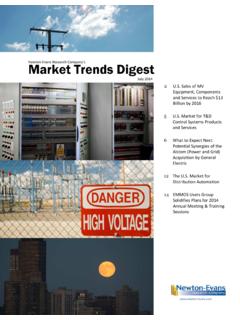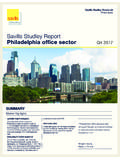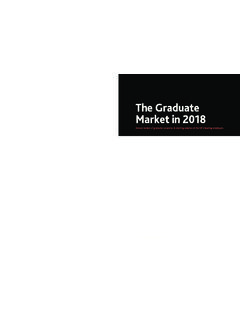Transcription of Munich Annual Economic Report2017 - wirtschaft …
1 Munich Annual Economic report 2017 Munich Annual Economic Report2017 List of charts Seite1 Munich 's position in city rankings42 Breakdown of employment by Economic sectors in Munich , 201653 Breakdown of employment by Economic sectors in Munich , 201664 Unemployment rates in large German cities, 201665 Econonomic growth in Munich and the surrounding region76 Purchasing power in large German cities, 201687 Office space turnover (im m ), 2015-201698 Vacant office space (in m ) and office vacancy rates, 2015-2016109 Planned local government investments, 2016 -20201110 Local government debt in the City of Munich12 Abridged version of the Munich Annual Economic report 2017 The Munich Annual Economic report 2017 provides a comprehensive overview of Economic development in Munich in 2016 and looks ahead to what the current year has in store.
2 Key regional indicators for the City of Munich itself and the surroun ding region are presented and English translation provides a brief summary of the most important findings of the city's current Annual Economic report , which is published in German 's economy has plotted an exceptionally positive trajectory in recent years and has thus outperformed the benchmarks for the rest of Germany and Bavaria. Positive development in all of the city's key Economic indicators was again evident in 2016 . This applies in particular to growth in employment levels, which was once again high and above the national Bavarian capital is one of the foremost venues for Economic activity and inno vation in both Germany and Europe. Locally based global players, a broad spread of innovative SMEs, a creative and agile start-up community and a plethora of rese arch organizations and institutes of higher education are the main ingredients in Munich 's recipe for lasting success.
3 Together, they create an environment that is singularly conducive to the development of new products and A dynamic und innovative business locationNumerous national and international studies and location benchmark tests have for many years consistently confirmed the outstanding quality of this location and have given Munich top rankings. In particular, Munich and the surrounding region have established a leading position compared to other large German cities in the field of Annual Economic report 20173 Figure1 Munich 's position in city rankingsSource: Munich as a business location. Facts and Figures, 2017A population of million (in June 2017 ) makes Munich Germany's third-largest city, after Hamburg ( million) and Berlin ( million).
4 Current population fore casts indicate that the number of residents will probably top the million mark by the end of 2022, rising to by the end of 2030 and million by 2035. That equates to an increase of between 2015 and 2030, and of bet ween 2015 and 2035. Munich 's current growth phase has continued unbroken for more than 15 years. Since the most recent population forecast in 2013, the number of residents has grown by around 30,000 per annum. In the process, Munich is be coming more cosmopolitan and the proportion of young people is cities like Munich are preferred destinations for migrants. Heavy inward mi gration to Munich is attributable to concurrent migration flows from a variety of sour ce regions: the countries added to the EU in the course of its eastward expansion, the EU's own Mediterranean countries in relation to the euro crisis; and the Middle East and Africa.
5 The rise in inward migration is driving up both population figures and birth rates. Munich 's birth rate has now exceeded its death rate, leading to what demographers refer to as natural population growth. A total of 18,107 child ren were thus born in the city in 2016 , breaking the preceding year's record birth rate for the tenth time in a forceful population growth is not unique to Munich alone, but can also be ob serve in other large, attractive German cities especially Berlin. The Germans speak of favored cities in this context: large cities where inward migration causes certain age brackets (mostly younger ones such as career beginners in the 25 to 34-year age group) to virtually double in size. Aspects that add to the attraction of a large city include a sizable university community, a plentiful selection of jobs, aes thetic architecture and, in particular, the reputation of a youthful lifestyle, all of which in turn leads to corresponding (inward) migration.
6 In Munich , the growing po pulation finds itself juxtaposed with growing demand for labor. The current forecast for gainful employment in Munich and the surrounding region concludes that the rise in employment in both will far exceed the national trend. According to this fore cast, the number of socially insured employees looks set to jump by equi valent to 113,000 more socially insured persons by 2030. Such dynamic growth is rooted in the modernization of Munich 's Economic structure, which has gained con siderable fresh momentum in recent years Annual Economic report 2017 Munich is already the second-largest venue for employment in Germany and has for years boasted the highest employment rate of all German cities that have 500,000 or more inhabitants.
7 Labor market and employmentLast year, socially insured employment in Munich rose by , an increase of around 24,900 jobs. In both absolute and relative terms, this figure marked the strongest gain in employment since the year 2000. In the past five years alone, more than 88,500 new socially insured jobs have been created in Munich , an incre ase of All in all, 821,971 people were employed in socially insured jobs in 2016 a new record for the Bavarian new jobs in 2016 were created in the service sector (22,563), equivalent to growth of At the same time, manufacturing too added 2,302 new jobs, reflec ting an increase of breakdown of employment across the various sectors in Munich is shown in fi gure 2. Figure 3 depicts the corresponding absolute numbers in each sector.
8 Figure2 Breakdown of employment by Economic sectors in Munich , 2016 Employees registered for social securitySource: Federal Employment AgencyMunich Annual Economic report 20175 Figure3 Breakdown of employment by Economic sectors in Munich , 2016 Source: Federal Employment AgencyConversely, unemployment declined in the period under review. On average for the year as a whole, a total of 42,938 people were registered as jobless 2,001 fewer than a year earlier. The average unemployment rate for the year fell by percen tage points to Munich thus continues to have the lowest unemployment rate of any German city that has 500,000 or more inhabitants. Figure4 Unemployment rates in large German cities, 2016 Annual averagesSource: Federal Employment Agency6 Munich Annual Economic report 2017 Economic growth and purchasing powerGross domestic product (GDP), a traditional indicator for national economies, is also calculated for cities and rural districts.
9 However, the exact figures are only available after a considerable time 's nominal GDP in 2014, for example, was EUR billion, reflecting a year-on-year increase of This gain puts Munich ahead of the corresponding national ( ) and Bavarian growth rates ( ). Munich 's share of Bavaria's GDP is , while the wider Munich region accounts for of Bavaria's GDP. Measured in terms of the relative share of the population of the Ba varian population live in the city of Munich and about 22% in the Munich region the Economic potency of the Bavarian capital stands out even more clearly. GDP per gainfully employed person is an especially telling figure in this context, as it re flects labor productivity among the gainfully employed population of a city or region.
10 In 2014, this indicator stood at EUR 95,182 in Munich , fully 30% higher than the Bavarian average and 39% higher than the national average. Year on year, labor productivity in Munich improved by Econonomic growth in Munich and the surrounding regionSource: Bavarian Office of Statistics and Data ProcessingFor many years, Munich has enjoyed the highest purchasing power of any large German city. Compared to the previous year, purchasing power in the Bavarian ca pital rose by and now stands at EUR 30,901 per capita 37% higher than the national average. Purchasing power is measured as the sum of all net income and government transfer payments available to private households less all costs such as rent, the cost of living and insurance Munich Annual Economic report 20177 Figure6 Purchasing power in large German cities, 2016 Source: Acxiom Deutschland GmbHMunich's corporate sectorThe register compiled by the Bavarian Office of Statistics shows that 96,092 com panies were based in Munich in 2014.






